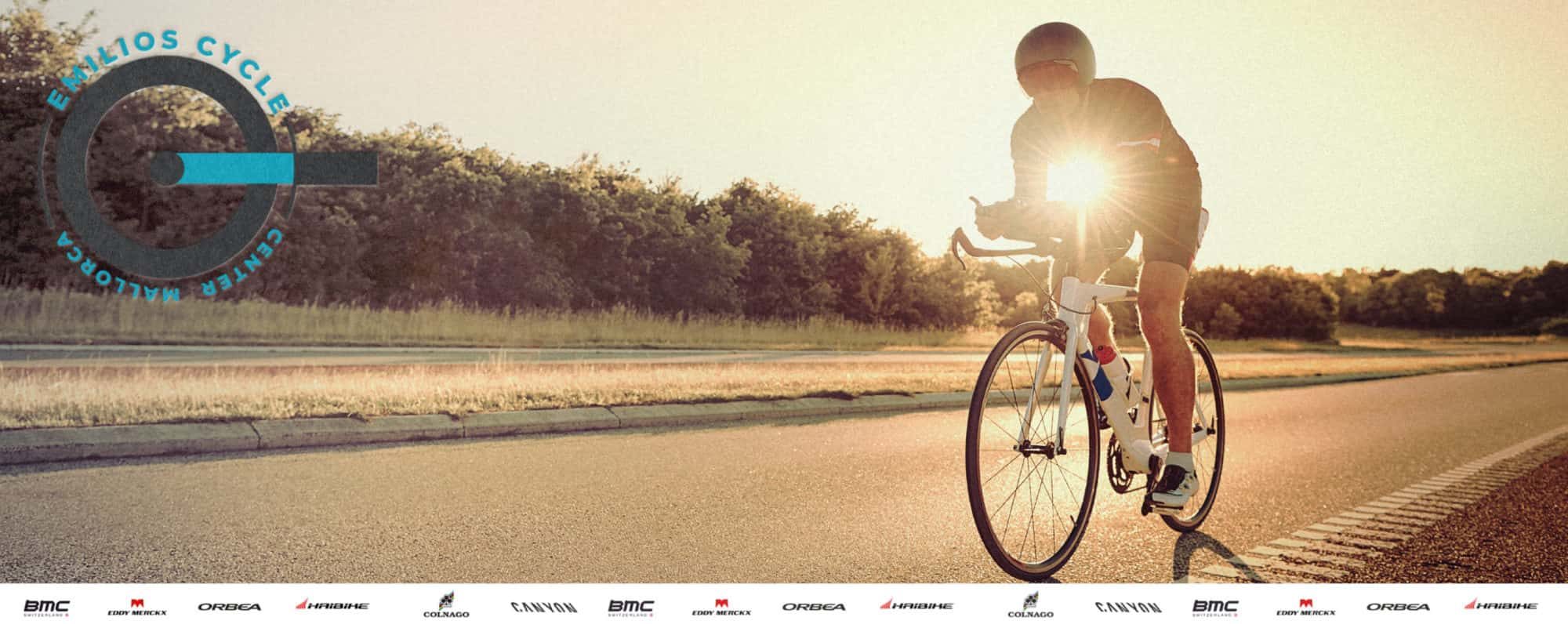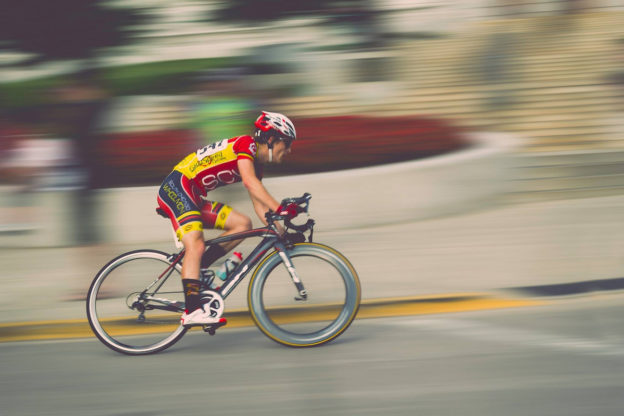The benefits of “the ideal sitting position” on a road bike are huge: greater power, more comfort, and more endurance. But the possibilities are endless – on many levels, including lever ratios, power transmission, aerodynamics, and ride comfort.
With less power input, the same speed may be achieved. Longer distances with less discomfort and tiredness. Such enhancements are feasible for many people. For individuals who have yet to find stuff that is ideally suited to them. Cycling racing is a combination of man and machine. The latter should be tailored to the rider’s engine. Not the other way around.
Bikefitting entails more than simply making minor adjustments
Bikefitting is more than merely adjusting the bike to specific body measurements or angle positions; it takes into account active – or non-activated – musculature as well as established individual movement patterns. Anatomy, ergonomics, and biomechanics are all elements that may be used to increase performance via seat position optimization. The posture should also be appropriate for the bike’s principal purpose. As a result, before making any changes, everyone should ask oneself the following questions: Long-distance or short-distance races? Is it flat or mountainous? Cycling marathons or cycling tours?
Bikefitting is largely concerned with “harmonizing” the rider-bike system – and maximizing the points of interaction between man and machine: saddle, handlebars, and pedals. It all comes down to biomechanical considerations, hip angle, and leverage. Pedaling efficiency, for example, is all about delivering force to the pedal as evenly as possible throughout one crank rotation. Many bike fitting specialists believe that the location of the cleats and the “contact point saddle” – how the pelvis interacts with it and how the surrounding muscles may be engaged as a consequence – are crucial.
Cycling for comfort and long distances
Various experts often advocate for alternative techniques. Raphael Jung, sports scientist says: “The saddle position is critical. All other contact points vary as the saddle is adjusted. The hip angle changes, the saddle handlebar elevation shifts, and the seat length shifts. The golden guideline here is to always test it out and feel it. How does it feel when you shift the saddle five millimeters lower, which implies you’re going ‘forwards’ and so adjusting the seat length, elevation, and hip angle? A competent bikefitter thrives on this kind of experience.”
Bikefitting is important for both pros and recreational cyclists. The danger of overuse is clearly higher if you ride your bike more often, but ambitious athletes or professionals put a larger focus on off-cycle training. Overachievers who desire too much too quickly and train too much or too hard are often the cause of health difficulties among hobby sports. Bike fitters may often assist in resolving these issues.
It is not a one-time incident
Fitting is not a one-time event, but rather a process in which man and machine alter one other. A bike’s geometry defines its function and region of usage. The road and gravel bike industry are getting more specialized, with models becoming increasingly specialized. So, how do you choose the bike that’s right for you, your requirements, and your intended use? How do you make changes? Because the dimensions of comfort and efficiency can only be increased by setting the pedal, handlebar, and seat contact points to perfection. What variables have the most impact on a bike’s handling?
The stack-to-reach value has a significant impact on sitting posture. The stack – the length of the bunch from the center of the bottom bracket to the expanded top edge of the head tube – and the reach – the horizontal distance from the extended center of the bottom bracket to the top edge of the head tube – are linked together in this equation. This allows comparing different frame sizes from various manufacturers easy. A stack-to-reach ratio of 1.45 or less indicates a sporty, low, stretched, aerodynamic racing seat posture. A high stack-to-reach number of 1.5 or more indicates: greater comfort, an upright body posture, a big hip angle, long-distance adaptability, and beginner-friendliness.
Caution: The seat angle might also have an impact on reach. A low stack-to-reach value is usually associated with a high steering angle. This usually results in a high level of agility as well as sporty, direct steering and handling.
Differences
The handling variations between models with steep and flat steering angles are frequently rather noticeable, particularly in rapid descents with tight corners. A flat steering angle guarantees a high degree of smoothness and, as a result, simpler handling for racing bike novices. This is one of the most significant distinctions between racing bikes on the one hand and comfort or endurance ones on the other.
In the former, the “aerodynamics” component is obviously far more essential, particularly in racing. A low stack-to-reach ratio is often complemented in amateur and professional cycling by the use of extremely long stems of 130 to 150 millimeters in length and with a somewhat negative inclination.
Whatever bike and orientation are most suited to which sort of rider? “Aero racing bikes, in particular, are quite appealing, particularly to amateur athletes,” adds Raphael Jung. The long and flat frame, on the other hand, often only allows for a low and stretched riding posture. However, owing to a sedentary way of life, particularly in the workplace with lengthy sitting periods, many hobby athletes are quite stiff and shortened in the hip flexor. Many people also have weak muscles in the back of their bodies, the so-called ‘posterior chain,’ and hence risk present and even long-term secondary issues in this region by sitting aggressively and extended.”
Gravel vs. Cyclocross
What is “long distance geometry”? Simply put, a higher stack-to-reach value means better comfort. The drawback is a more “sluggish” ride. However, on lengthy climbs, this more upright sitting posture might be advantageous. It makes it easier to breathe, for example. A level steering angle also guarantees a high degree of smoothness, making steering easier. “Those who generally ride longer semi-sporty tours are well advised with Endurance geometry and may adopt a more upright riding posture, which also puts less pressure on the stabilizing muscles and can therefore provide comfort advantages,” Raphael Jung adds.
Gravel bikes, or fast off-road bikes, are becoming more popular. But what are they best suited for, and how do they vary from cyclocross models? Cyclocross bikes are mainly intended for racing. In terms of maneuverability, a classic racing model resembles a speedy road bike. Seating is often built for races that are just 60 minutes long – thus: low, stretched, and athletic. The maximum allowable tire width is 33 millimeters.
Gravel bikes are often more comfortable than road bikes for this reason alone. Tire clearance is greatly increased, allowing for the installation of 45 or even 50-millimeter-wide tires. Tubeless tires are another popular trend. Tubeless types may often be ridden with low air pressure, which improves comfort and grip, particularly on loose or muddy ground.
The fitting procedures
The present sitting posture is examined first. Even though the athlete sits “far forward,” this does not imply that a long stem with a big cant must likewise be ridden. Because “far forward has nothing to do with an aggressive racing posture,” according to Marks Walter physiotherapist, physiologist, and bike fitter Bastian Marks. Because the basic issue is in the forefront, which posture is best suited to the individual rider. First, the seat length is examined – and measured – to ensure that the rider’s pelvis may be freely positioned. The athlete is then positioned on the bike in the most aerodynamic position possible – or as required. The bikefitters next assess any possibilities for performance in pedaling technique.
Typical missteps
“When purchasing a bike, people are often questioned about stride length, with saddle height being the simplest to alter. However, almost no one in the industry inquiries about the leg-to-upper-body ratio “Bastian Marks explains. This implies that persons with a short torso and somewhat long legs face a high danger of purchasing a frame that is too large for them, causing them to sit much too stretched out.
Saddle Posture
Bikefitter Bastian Marks is notorious for putting “his” athletes out front. “Putting the saddle forward benefits many, but not all.” Marks believes this is best for smaller, heavier athletes. “A more compact riding posture allows the upper body to move more easily. This may help the neck, lumbar spine, and lungs, making breathing easier. If the frame doesn’t allow for it, a non-offset seatpost may help a lot. For the ambitious, I guarantee both spots. I propose a saddle that provides for both compact sitting and lengthy riding positions. Closer to the handlebars or a longer stem increase handling and leverage in sprints.”
To minimize excessive hand pressure, if you “shift” your complete posture forward, you should also “shift” your cycling shoes’ cleats forward in tandem. Tall and slender cyclists may sit more “behind the bottom bracket” on the saddle because their pelvis can be positioned upright. R. Jung adds: “Those who move their complete body forward on the bike should pay attention to their body’s center of gravity. Hand numbness or shoulder and neck pain are common symptoms of a forward-leaning and improperly maintained posture.”
Crank length
The crank length affects the rider’s posture. It’s vital since replacing the crank is expensive if you’ve already purchased the bike. Crank length has been overlooked for a long time, but that is changing. Dealers and manufacturers are increasingly focusing on shorter cranks, particularly in smaller sizes. For those under 1.70 meters, I recommend a crank length of less than 170 millimeters. This may help pedaling. In brief, the crank length determines the pedaling circle. Because the summit of the circle is the most difficult to reach, it is generally where strength is lost. If the circle is smaller, the leg may be moved more easily. The difference in crank circle size is substantially less than the difference in leg lengths. Shorter legs need a shorter crank. Movement is much simpler and more efficient. Those who move their full body forward on the bike should pay attention to their body’s center of gravity. Hand numbness or shoulder and neck pain are common symptoms of a forward-leaning and improperly held posture.
Conclusion
The purpose of usage, as well as the individual’s physical capabilities, are the determining variables. If you wish to become acclimated to riding in a low posture, short cranks, cleats positioned far back, and a saddle mounted forward may help to compensate for the hip flexion. It obviously makes sense to have a bike fitted with the previous set-up before purchasing a new bike. A realistic goal setting process begins with an analysis of existing movement patterns and the establishment of realistic objectives. With addition, in respect to the new bicycle. One conclusion is that there is no such thing as an “ideal seated posture” that is universally legitimate and acceptable. Because everyone is unique in their own way. Every individual’s body composition is unique, and as a result, each case must be evaluated on its own merits.

